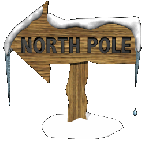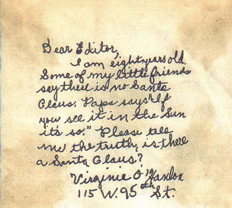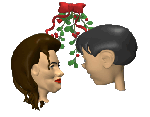On a cold New Year’s Eve, a poor girl tries to sell matches in the street. She is freezing badly, but she is afraid to go home because her father will beat her for not selling any matches. She takes shelter in a nook and lights the matches to warm herself. In their glow, she sees several lovely visions including a Christmas tree and a holiday feast. The girl looks skyward, sees a shooting star, and remembers her deceased grandmother saying that such a falling star means someone died and is going into Heaven. As she lights her next match, she sees a vision of her grandmother, the only person to have treated her with love and kindness. She strikes one match after another to keep the vision of her grandmother nearby for as long as she can. The child dies and her grandmother carries her soul to Heaven. The next morning, passers-by find the dead child in the nook, with rosy red cheeks and a smile on her face. They express sadness at her death and the burnt-out matches she must have used to warm herself, but they cannot know the wonderful visions she saw in her final moments or how gloriously she is celebrating the New Year with her grandmother.
Another favorite of mine, but so sad.
Tuesday, January 26, 2010
Sunday, January 24, 2010
Legend of the Candy Cane
Many years ago, a candy maker wanted to make a candy at Christmas time that would serve as a witness to his Christian faith. He wanted to incorporate several symbols for the birth, ministry and death of Jesus. He began with a stick of pure white hard candy; white to symbolize the Virgin Birth and the sinless nature of Jesus; hard to symbolize the solid rock, the foundation of the Church; firmness to represent the promise of God. The candymaker made the candy in the form of a "J" to represent the name of Jesus, who came to earth as our Savior. He thought it could also represent the staff of the Good Shepherd, with which he reached down into the ditches of the world to lift out the fallen lambs who, like all sheep, have gone astray.
Thinking that the candy was somewhat plain, the candymaker stained it with red stripes. He used three small stripes to show the stripes of the scourging Jesus received, by which we are healed. The large red stripe was for the blood shed by Christ on the cross so that we could have the promise of eternal life. Unfortunately, the candy became known as a candy cane - a meaningless decoration seen at Christmas time. But the true meaning is still there for those who have eyes to see and ears to hear.
 There are several stories about the candy cane, and this is just one of them which I happened to enjoy. I found it at: http://home.att.net/~scorh3/CandyCane.html
There are several stories about the candy cane, and this is just one of them which I happened to enjoy. I found it at: http://home.att.net/~scorh3/CandyCane.html
Thinking that the candy was somewhat plain, the candymaker stained it with red stripes. He used three small stripes to show the stripes of the scourging Jesus received, by which we are healed. The large red stripe was for the blood shed by Christ on the cross so that we could have the promise of eternal life. Unfortunately, the candy became known as a candy cane - a meaningless decoration seen at Christmas time. But the true meaning is still there for those who have eyes to see and ears to hear.
 There are several stories about the candy cane, and this is just one of them which I happened to enjoy. I found it at: http://home.att.net/~scorh3/CandyCane.html
There are several stories about the candy cane, and this is just one of them which I happened to enjoy. I found it at: http://home.att.net/~scorh3/CandyCane.htmlThursday, January 21, 2010
Wednesday, January 20, 2010
Tuesday, January 19, 2010
Location of Santa's Workplace
In 1879, Thomas Nast, revealed to the world in a series of drawings that Santa's Workshop is at the North Pole. However, it is less clear which North Pole Thomas Nast was referring to. The two commonly referred to North Pole's for Santa's workshop are the Geographic North Pole and the Magnetic North Pole. However, one can deduce from film and pictures the aurora borealis centres on Santa's Workshop, indicating the workshop is at the Magnetic North Pole in Northern Canada. Once a year a train, the Polar Express travels to the Santa's Workshop. It is doubtful train tracks could be rebuilt on polar ice each winter. In 1994, United States Air Force pilots reported they have seen no signs of a workshop at the Geographic North Pole in the physical realm. In the same year, Canada Post issued Santa's Workshop it's own postal code H0 H0 H0. In 2004 nuclear submarines surfaced at the North Pole, proving once and for all Santa Workshop is not at the Geographic North Pole.


From Wikipedia


From Wikipedia
Friday, January 15, 2010
Yes Virginia, There is a Santa Claus
In 1897, Dr. Philip O’Hanlon, a coroner's assistant on Manhattan's Upper West Side, was asked by his then eight-year-old daughter, Virginia (1889–1971), whether Santa Claus really existed. Virginia O'Hanlon had begun to doubt there was a Santa Claus, because her friends had told her that he did not exist.
DEAR EDITOR: I am 8 years old.
No Santa Claus! Thank God! he lives, and he lives forever. A thousand years from now, Virginia, nay, ten times ten thousand years from now, he will continue to make glad the heart of childhood.
Dr. O’Hanlon suggested she write to the New York Sun, a prominent New York City newspaper at the time, assuring her that "If you see it in The Sun, it's so." While he may have been passing the buck, he unwittingly gave one of the paper's editors, Francis Pharcellus Church, an opportunity to rise above the simple question, and address the philosophical issues behind it.
DEAR EDITOR: I am 8 years old.
"Some of my little friends say there is no Santa Claus.
"Papa says, 'If you see it in THE SUN it's so.'
"Please tell me the truth; is there a Santa Claus?
"VIRGINIA O'HANLON.
"115 WEST NINETY-FIFTH STREET."
VIRGINIA, your little friends are wrong. They have been affected by the skepticism of a skeptical age. They do not believe except [what] they see. They think that nothing can be which is not comprehensible by their little minds. All minds, Virginia, whether they be men's or children's, are little. In this great universe of ours man is a mere insect, an ant, in his intellect, as compared with the boundless world about him, as measured by the intelligence capable of grasping the whole of truth and knowledge.
Yes, VIRGINIA, there is a Santa Claus. He exists as certainly as love and generosity and devotion exist, and you know that they abound and give to your life its highest beauty and joy. Alas! how dreary would be the world if there were no Santa Claus. It would be as dreary as if there were no VIRGINIAS. There would be no childlike faith then, no poetry, no romance to make tolerable this existence. We should have no enjoyment, except in sense and sight. The eternal light with which childhood fills the world would be extinguished.
Not believe in Santa Claus! You might as well not believe in fairies! You might get your papa to hire men to watch in all the chimneys on Christmas Eve to catch Santa Claus, but even if they did not see Santa Claus coming down, what would that prove? Nobody sees Santa Claus, but that is no sign that there is no Santa Claus. The most real things in the world are those that neither children nor men can see. Did you ever see fairies dancing on the lawn? Of course not, but that's no proof that they are not there. Nobody can conceive or imagine all the wonders there are unseen and unseeable in the world.
You may tear apart the baby's rattle and see what makes the noise inside, but there is a veil covering the unseen world which not the strongest man, nor even the united strength of all the strongest men that ever lived, could tear apart. Only faith, fancy, poetry, love, romance, can push aside that curtain and view and picture the supernal beauty and glory beyond. Is it all real? Ah, VIRGINIA, in all this world there is nothing else real and abiding.
No Santa Claus! Thank God! he lives, and he lives forever. A thousand years from now, Virginia, nay, ten times ten thousand years from now, he will continue to make glad the heart of childhood.
The picture is of Francis Pharcellus Church, writer of the famous editorial.
 Image via Wikipedia Image via Wikipedia |
| Picture of the original letter. |
 |
| Virginia O'Hanlon (circa 1895) |
Thursday, January 7, 2010
Christmas Traditions
What is your Christmas Tradition? If you would like to comment on this, please do. It's interesting to learn how others celebrate Christmas with their own holiday traditions.
Elf Magic Tradition-Making Mischief
Someone has brought to my attention the Elf Magic Tradition which I also did not know about, but really enjoy the whole idea of it! Unlike the Elf on a Shelf, children can play with the Elf Magic Tradition elves. This link will take you to the Elf Magic website to learn more about the tradition.
http://www.elf-magic.com/about.htm
Two more links for Elf Magic Videos:
http://www.youtube.com/watch?v=-FJojG31Y1E
http://www.youtube.com/watch?v=meWLNcw-1Ww
In this video the elf has a cracker and water which apparently is a treat for them. The crackers sound like crunching snow and the water is melted with North Pole snowflakes!
http://www.elf-magic.com/about.htm
Two more links for Elf Magic Videos:
http://www.youtube.com/watch?v=-FJojG31Y1E
http://www.youtube.com/watch?v=meWLNcw-1Ww
In this video the elf has a cracker and water which apparently is a treat for them. The crackers sound like crunching snow and the water is melted with North Pole snowflakes!
Tuesday, January 5, 2010
The Elf on the Shelf: A Christmas Tradition [Home]
Here is a fun place to visit. Many things to do. You can make a cookie for Santa, send it on and even print it out, games to play, quizzes to do, etc. What fun!
Elf on a Shelf Tradition
Where have I been all of these years? I love Christmas and have never heard of the Elf on a shelf tradition!! What a cute idea for children and what fun! I want my elf!!
Friday, January 1, 2010
Holly
Holly berries are somewhat toxic and will cause vomiting and/or diarrhea when ingested by people, partly due to the ilicin content. The fatal dose is estimated to be around twenty berries for adults. However they are extremely important food for numerous species of birds, and also are eaten by other wild animals. In the fall and early winter the berries are hard and apparently unpalatable. After being frozen or frosted several times, the berries soften, and become milder in taste. During winter storms, birds often take refuge in hollies, which provide shelter, protection from predators (by the spiny leaves), and food.
Other popular holiday plants are the poinsettia, misletoe, Christmas cactus, and amaryllis.
Other popular holiday plants are the poinsettia, misletoe, Christmas cactus, and amaryllis.
Subscribe to:
Posts (Atom)
Followers
Feedjit
Blog Archive
-
▼
2010
(83)
-
▼
January
(13)
- The Little Matchgirl
- Legend of the Candy Cane
- Christmas "2008"
- Christmas "2009" Slideshow
- Location of Santa's Workplace
- Clip of "Yes Viriginia, there is a Santa Claus"
- Yes Virginia, There is a Santa Claus
- Christmas Traditions
- Elf Magic Tradition-Making Mischief
- The Elf on the Shelf: A Christmas Tradition [Home]
- Elf on a Shelf Tradition
- Holly
- Me and my Gino.
-
▼
January
(13)
About Me
Popular Posts
-
It's my favorite time of the year to watch QVC's Christmas in July show. They have so many cool things for Christmas. I like the f...
-
Image credit, Royce Bair , from The Stock Solution . I thought this was such a cheery cupcake Christmas tree! What a great idea. Royce Bair...
-
Here are some crafty ideas for using pinecones in your Christmas decorating. All of these are from http://www.marthastewart.com . There are...
-
Personalize funny videos and birthday eCards at JibJab! Decided to have a little fun today with Jib Jab! In this video is my hubby, Bruce, ...
-
There is a wide range of tattoo designs available, and I strongly recommend that you run as many top quality work of art as poss...
-
I decided to check out more antique christmas tree stands and found a few Google Images. I love to look at the old tree stands. It's ju...
-
I've decided to post pic's of my Easter tree even though it's on my Christmas blog. I don't do very much in the way of Easte...
-
Such a beautiful song and Enya has the voice of an angel! So calming and peaceful. If you listen, you will need to pause the music player on...
















